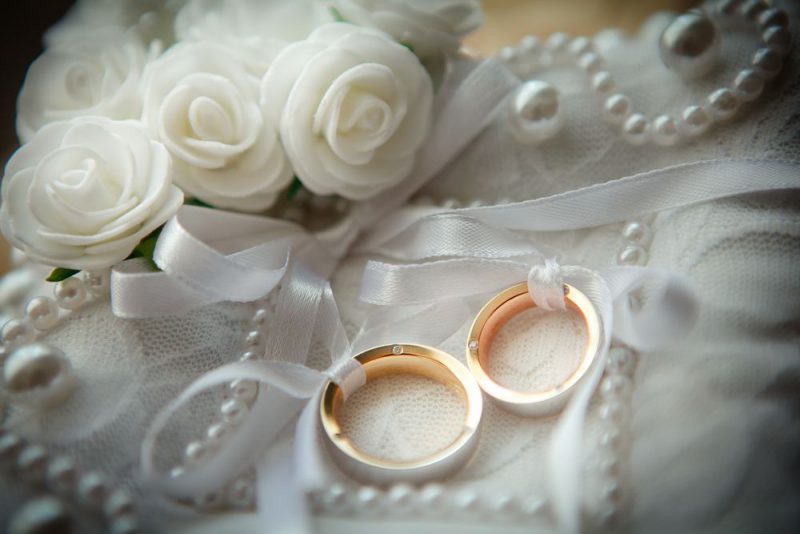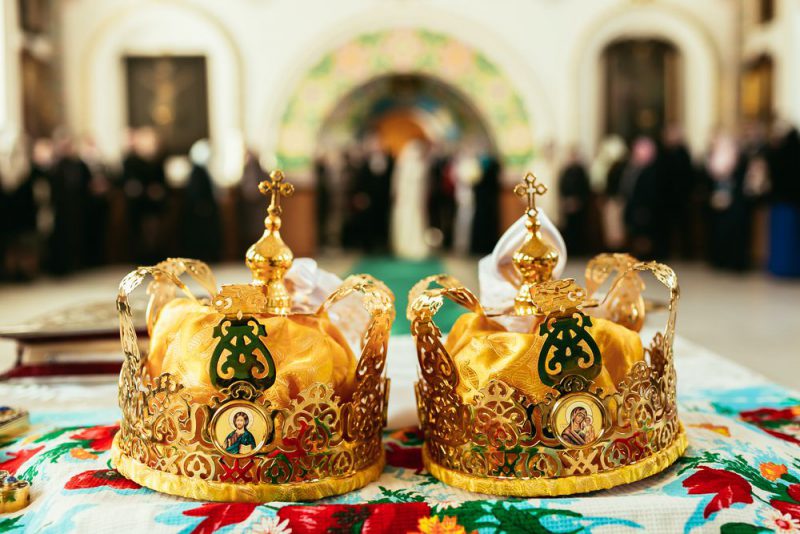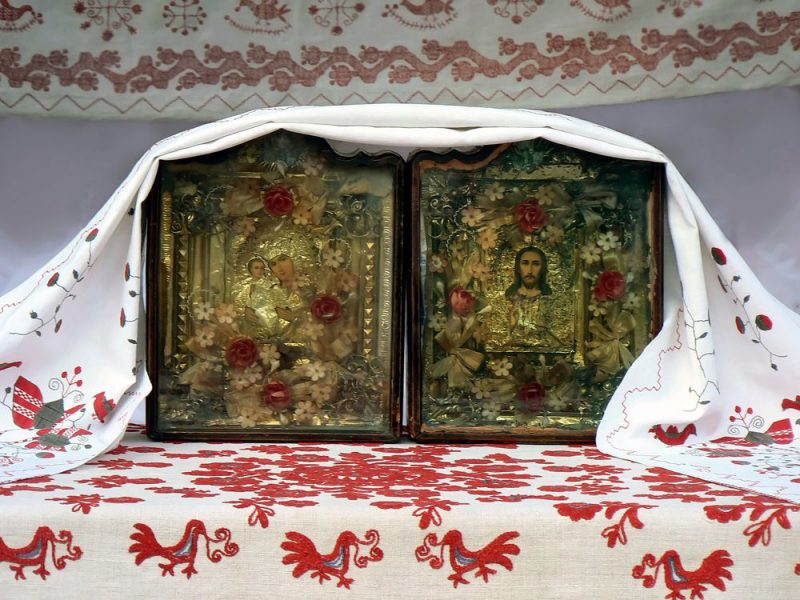Russian wedding traditions: 17-19 centuries
In one of our previous articles we told you about the wedding traditions of ancient Slavs. In this article, you will learn about Russian weddings traditions of 17-19 centuries.

Weddings of aristocrats
In the 17th-18th centuries, traditional forms of marriage still dominated: the groom sought the consent of the parents, and only after that an official proposal to the bride took place. Romance between the young people before marriage was considered undesirable. The youth, whose worldview was partly influenced by the European romance, condemned the severity of old-school requirements considering them a consequence of the ignorance of the older generation.
At the beginning of the 19th century Russian and European traditions began to mix. For example, instead of the celebration that lasted a few days, now the newlyweds went on a trip or to the village immediately after the wedding ceremony. But in the 1920s, national Russian traditions partially returned and wedding feast lasted again three days and sometimes longer.
The “agreement” in the noble environment was often characterised by relative democracy. Young people could meet each other at balls, during visits, in the service in the church, etc.
Girls were allowed to the balls starting from 16 years old. There, potential grooms watched the girl’s ability to hold herself in society, to communicate with guests and hosts of the ball, and to dance. Dancing was a way to get to know each other personally and express the feelings: each dance had a hidden meaning. Girls had “dance cards” where they noted to whom they gave this or that dance (dancing all the time with the same partner was considered a sign of special favour to him).
Meanwhile, unmarried women were still not allowed to appear in public alone, much less at a ball. Even if the girl and the young man liked each other, they could not be alone with each other until the wedding day. Often, the only way to communicate tet-a-tet was through letters.
In Saint-Petersburg, young people could also meet each other on the Spirits Day which falls on 51st day after Easter. On this day, in the Summer Garden of St. Petersburg, “viewings” were held. Grooms lined up along the alleys of the garden along with matchmakers who knew everything about the groom and could give out all the necessary information. Future brides walked along these alleys accompanied by one of the family members who helped to make a choice.
Sometimes it was the parents who chose the partner in life for their children. This could led either to a tragedy, as the parental choice was not always appreciated by their children, or to the creation of happy and loving families.
Often, an explanation between the young future couple could occur earlier than when the groom asked the bride’s hands from her parents. Regular visits by a single man to the house where the bride lived, were also a signal to society and parents about the intentions of the guest.
The nobility of the family, the financial situation of the groom, the presence of connections still played a big role in the choice of spouses.
In the middle of the 19th century, especially after the peasant reform of 1861 and abolishment of serfdom, the borders of the nobility began to diffuse. Many nobles down on their financial luck were forced to marry rich representatives of the lower classes, most often merchants. Such misalliances were beneficial to both spouses, but were considered shameful in a noble environment.
If you want to know more, the noble weddings and all the rituals associated with them are described in detail in Russian classical literature, for example, by A.S. Pushkin in the poem “Eugene Onegin”, by L.N. Tolstoy in the epic novel “War and Peace”, or by F.M. Dostoevsky in the novel “The Idiot”.

Weddings traditions of peasants
As you know, until 1861 in Russia, if you were not an aristocrat, you were most likely a serf. The life of serfs entirely depended on the landowner who had the right to control not only labor but also the personal life of the peasants.
Because according to Slavic customs, after marriage women went to live to their husbands’ family, and since the landowners were not interested in the loss of employees, peasants had to choose a life partner from their own estates. If it happened that young people from different estates wanted to get married, most often it ended quite dramatically.
Peasants often could choose their future spouse themselves. However, landowner could also decide who he would want marry. In a fit of rage or anger, the owner could marry an old man or a cripple to a pretty young girl. The will of the owner could not be challenged. However, this was rather an exception than a norm.
A village wedding was a variety of ceremonies and traditions that were characteristic of each locality but had common features. Despite the family nature of the event, the wedding was a celebration for the whole village.
Village marriages were closely linked to the agricultural calendar. Usually, young people met during the spring holidays, and it was customary to organise weddings in the fall, when works in the fields were completed, or in winter, when preparations for the new working season had not yet begun.
For the holiday of Ivan Kupala in June, a matchmaking happened: young boys and girls performed round dances with songs, showed themselves and chose their future spouse. At the end of the day, couples who decided to get married had to go to their landowner and ask for permission.
Overall the rituals at that time followed the old traditions that we described in detail in the previous article: first the groom’s parents sent matchmakers to the girls house, then the parents of the girl visited the house of the groom. If the parties were satisfied with each other, the “agreement” was confirmed – the day of the public announcement of the wedding. After that, the preparations followed, including the ritual cry of the bride and the bachelorette party when the bride said goodbye to her female relatives, received instructions and gifts.
On the first day of the wedding, the groom’s wedding procession (wedding train) was sent to the bride’s house. Here, the wedding ransom traditionally began – the Slavic rite, in which usually the matchmaker, friends, the groom himself or the guests pay a real or symbolic fee for letting the bride out of the house. Having received the blessing of the bride’s parents, the young went to church. Wedding in church was the main highlight of the ritual. After the wedding, the bride and groom went to the groom’s house.

An important role in the wedding ritual was given to a friend and other wedding officials, such as matchmakers and girlfriends. Usually the role of a friend was played by the same peasant who knew the whole procedure for conducting a multi-day wedding, the texts of prayers, poems, slander, fairy tales, sentences. The village wedding lasted from 3 to 7 days.
If among the serfs there were more prosperous families, then the wedding might have been arranged differently. In families where there were several daughters, there was a rule of seniority, i.e. the eldest daughters had to get married before the younger ones. Every potential bride was preparing a dowry: embroidered towels, woven clothes, – this way she demonstrated her skills, her ability to work hard and run the household tight.
Conclusion
We have told you about the wedding customs and traditions in Russia in 17th-19th centuries. In the next article of this series, we will tell about about the wedding traditions after the Revolution. Stay in touch, and if you have any questions or suggestions, feel free to leave them in the comments!







Good afternoon – I am writing my dissertation on Nancy Prince, and she lived in Russia for ten years. The reason for my inquiry is to find out a recommended academic source attached to this paragraph published on your site:
“In Saint-Petersburg, young people could also meet each other on the Spirits Day which falls on 51st day after Easter. On this day, in the Summer Garden of St. Petersburg, “viewings” were held. Grooms lined up along the alleys of the garden along with matchmakers who knew everything about the groom and could give out all the necessary information. Future brides walked along these alleys accompanied by one of the family members who helped to make a choice.”
Thank you for you whatever help you can provide!
Hi SJ,
The source is not quite academic. This information is taken from the book “Петербургские женщины XIX века” (Petersburg women of the 19th century) written by Elena Pervushina.
You can read this book online in Russian, if you like: http://loveread.ec/read_book.php?id=69464&p=1